GIF, Interior and Product Design


Le Corbusier used colour to define and articulate space, making it part of the concept from the very first sketches. “At the Unite d’Habitation, Le Corbusier painted portions of the concrete facade brick red, bright yellow, cobalt blue, and peacock green. Inside the Palace of Justice in Chandigarh, he installed abstract tapestries. At Villa Roche, he painted the floor pale pink, the staircase rust red, the ceiling and some walls cream, and used shades of blue on doorways and light diffusers.”
Based on his theories of colures and their mutual correlation, he created a wallpaper line of 63 colours. Recently, Italian manufacturer Gigacer created a new collection of ceramic tiles which include 12 shades from Le Corbusier’s “Architectural Polychromie,” plus two shades of grey that replicate the colour of concrete Le Corbusier preferred on his Brutalist structures. Images: courtesy Gigacer

Carlo Ratti Associati studio in collaboration with Opendot, launched Lift-Bit, a shape-shifting sofa, based on the radical British architect Cedric Price's 1970s “Generator Project.” The sofa is a composite honeycomb structure with several hexagons that can be manipulated thanks to embedded motion-tracking sensors. The individual stools' height can be easily varied remotely through a dedicated mobile app or with a hand gesture. “In the future, we could imagine an architecture that adapts to human need, rather than the other way around - a living, tailored space that is molded to its inhabitants' needs, characters, and desires,” says Professor Carlo Ratti

AnZa is espresso maker made of concrete, designed by the designers at Montaag (Per Ivar Selvaag, principal). Montaag is a multidisciplinary design studio with offices in Oslo and Stavanger, Norway focusing their design efforts toward creating solutions to unorthodox design problems
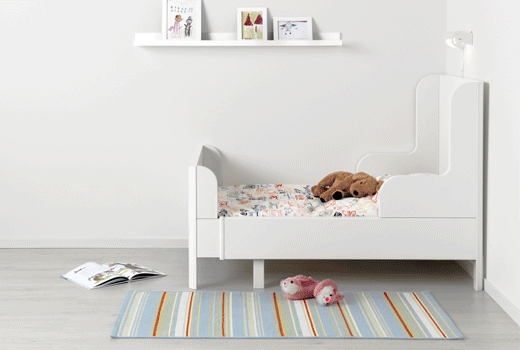
‘Busunge’ extendable bed, designed by Carl Öjerstam for IKEA

Swedish real estate website Nooks used animated GIFs within home ads
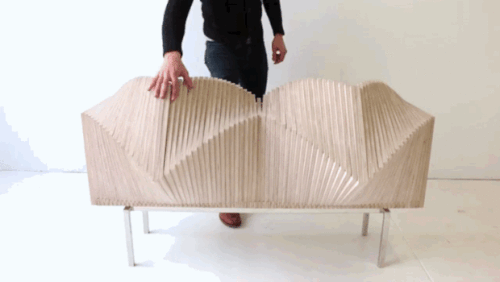
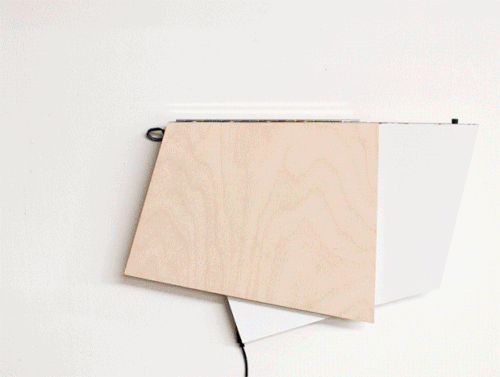
[left] Wave wood cabinet by Sebastian Errazuriz
[right] Cut-and-fold furniture by Andrea Kordos and Tony Round

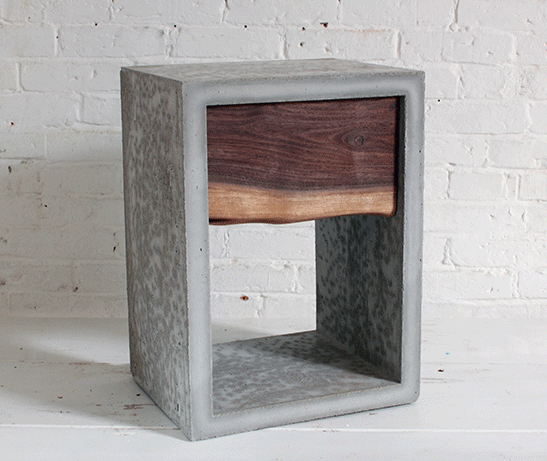
[left] Inspired by the clever design of pop-up books, The Folding Chair and Ottoman can be used as a permanent piece of furniture in modern homes and businesses but can also be easily transported, stored, and set up. The entire set is manufactured from a single 5’ square sheet of Baltic birch plywood. The sturdy chair folds in seconds using over 10’ of custom stainless steel hinges. For shipping or storage the chair folds flat to 5’ x 2’ 6” x 1.5”. Via Revol Design Nathan Tobiason, San Diego, California
[right] Concrete-walnut nightstand by Homemade Modern

Art GIF by Cybèle Young
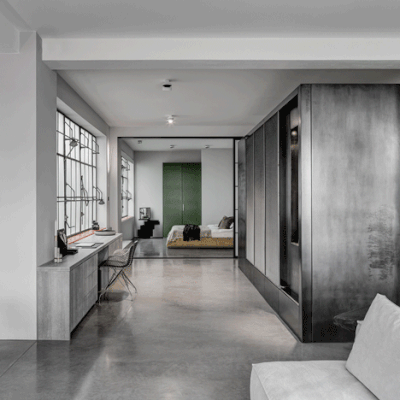
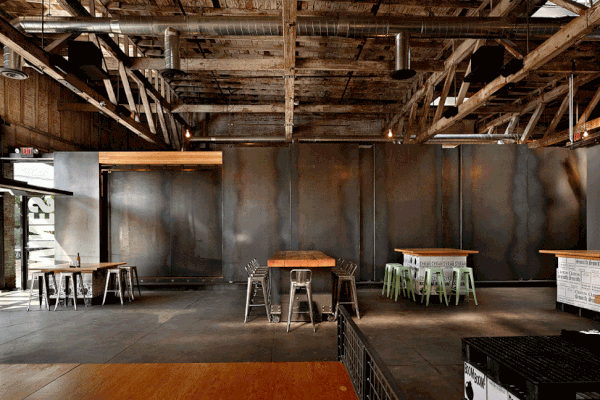
[left] Apartment in London designed by APA for two film director
[right] Movable interior walls of Charles Smith Wines tasting room
TH House was built as a part of a wider development, but Hanoi-based DANstudio was tasked with transforming it from a shell into a family home. Big shelves create places for displaying pot plants on the facade of this house that DANstudio has completed on the outskirts of the Vietnamese capital in 2017

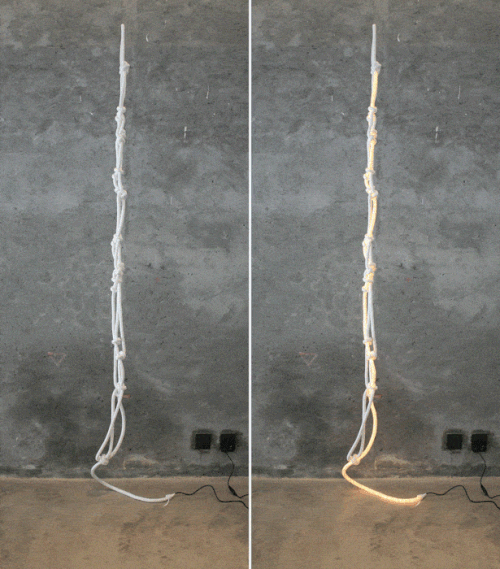



Christian Haas ropes lamps;
concrete cube lamp by Vincent Buret;
LED light by Ushki Design Studio;
lamp by Ilia Potemine, 2017;
levitating lamp by Simon Morris

Paul Cocksedge's White Light installation exposes the phenomenon of collared light appearing as white light. Each LED was painstakingly placed on the ceiling in order to blend their colours into the white light you actually see. As the panels crossfade from collared to warm white light, the lighting in the room remains totally the same. Image: Paul Cocksedge Studio
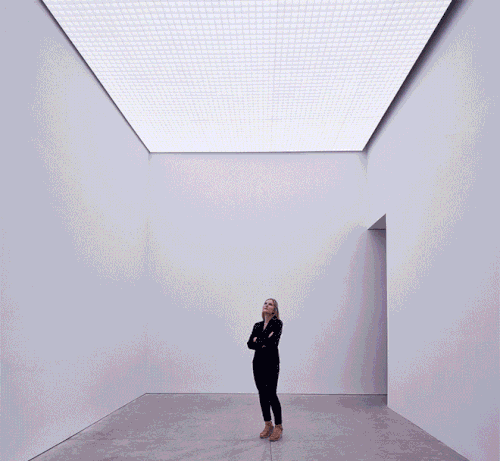


[left] “Baciamano fronte e retro” (front and back armchair) was designed by architect and designer Nigel Coates in collaboration with Barnaba Fornasetti (Atelier Fornasetti) in 2014. This unique piece has a body structure in wood and filling in polyurethane, with jacquard (for the double-sided cushion) and velvet (for the body). Both the cushion and table are decorated with one of the many anthropomorphic variations that are key to Fornasetti
[right] Before After Vintage Modern atelier’s Robert Probst-style perch chair for Herman Miller

After working at Michigan Star Furniture Company from 1909, De Pree started his own company in 1923, naming it after his father-in-law Herman Miller who gave him a loan to buy the company. The Herman Miller was known for innovative designs that connected the latest technology and sustainability in the manufacture of pieces signed by Charles and Ray Eames, George Nelson, Isamu Noguchi, Alexander Girard, Isay Weinfeld, Robert Propst, Don Chadwick, Ayse Birsel, Studio 7.5, Yves Behar and many others. The company became well known for creating only high quality furniture, so the products were released after an average of two to three years of development to make them stand alone on their own merit.

[above] Extendable desk by Nathalie Dackelid
[right] Sofa concept by Alain Gilles


Memory wood sofa designed by Sitskie Furniture
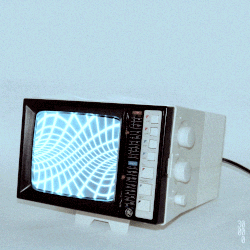


Art by Punyisa Sinraparatsamee made during Artist residence at Fukuoka Asian Art Museum, Japan 2016
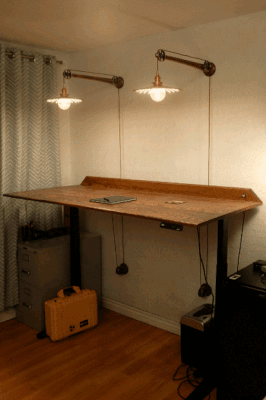

Vintage industrial design
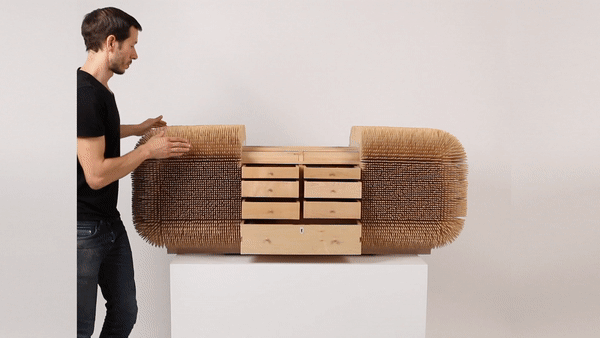
Magistral, a piece from Errazuriz’s Mechanical Cabinet series, a collection of furniture follies that open with elaborately complex mechanisms. It seems to pay homage to Thomas Heatherwick’s U.K. pavilion for the 2010 Shanghai World Expo.